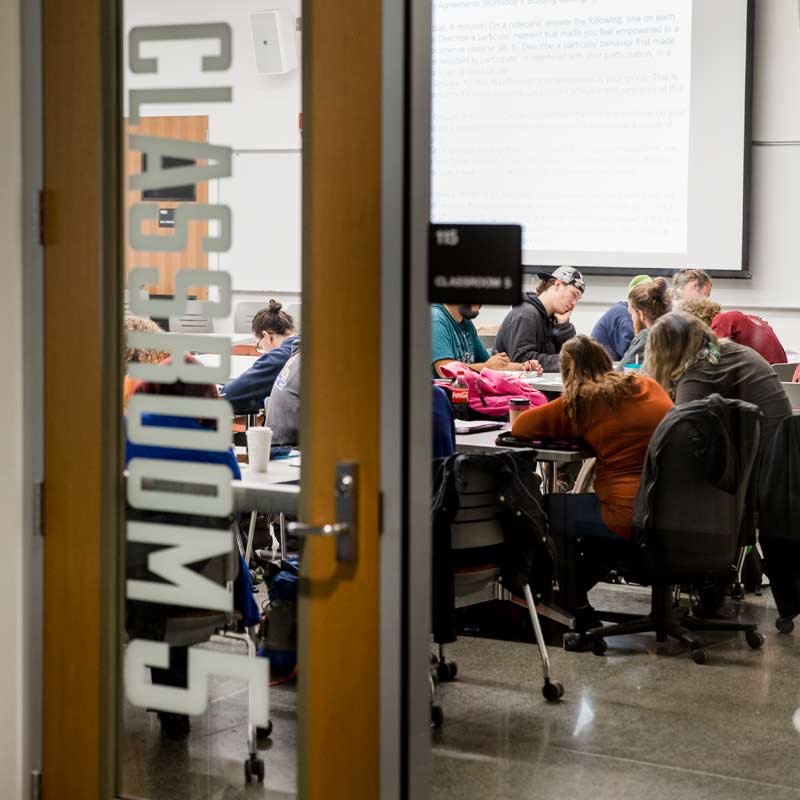Integrative Learning Library
Resources
Articles and Papers
Engendering Habits of Mind and Heart Through Integrative Learning
Simone Himbeault Taylor. About Campus. November/December 2011.
This article explores what integrative learning and interdisciplinary learning mean, as well as the role of student affairs professionals in promoting an developing students' capacity for self-reflection—and essential part of integrative learning.
When Faculty Assess Integrative Learning: Faculty Inquiry to Improve Learning Community Practice
Emily Lardner and Gillies Malnarich. Change: The Magazine of Higher Learning. September/October 2009.
This article, published in Change magazine, details what faculty from 20 institutions learned about assessing work and integrative learning during the Washington Center's National Project on Assessing Learning in Learning Communities.
Assessing Integrative Learning: Insights from the National Project on Assessing Learning in Learning Communities
Emily Lardner and Gillies Malnarich. Journal of Learning Communities Research 3(3). Dec. 2008/Jan. 2009.
In 2008, the Journal of Learning Communities Research published a special issue on the national project on Assessing Learning in Learning Communities, in which 22 institutions focused on how best to assess students' learning in learning communities and, more specifically, how to assess students' integrative and interdisciplinary learning. This article describes key findings from this two-year project.
Juggling and the Art of the Integrative Assignment
Lynn Dunlap and Larry Sult. Journal of Learning Communities Research 3(3). Dec. 2008/Jan. 2009.
This paper describes how explicit assignment criteria for interdisciplinary integration and ample practice helped students improve their mastery and integration of individual disciplines.
Productive Shifts: Faculty Growth Through Collaborative Assessment of Student Work
Veronica Boix-Mansilla. Journal of Learning Communities Research 3(3). Dec. 2008/Jan. 2009.
This article, part of the JLCR's special issue on the National Project on Assessing Learning in Learning Communities, explores how faculty inquiry focused on student work can lead to conceptual changes in how we think about assessment, disciplinary expertise, and interdisciplinary learning.
A New Era in Learning Community Work: Why the Pedagogy of Intentional Integration Matters
Emily Lardner and Gillies Malnarich. Change: The Magazine of Higher Learning. 2008.
This article describes a significant shift in emphasis in learning community practice over the past decade: from a focus on models and organizational structures to a focus on intentionally designed integrative learning for students.
Assessing Student Learning at Disciplinary Crossroads
Veronica Boix-Mansilla. Change: The Magazine of Higher Learning. January/February 2005.
This article explores what "interdisciplinary understanding" means and describes a framework for assessing student interdisciplinary work.
A Statement on Integrative Learning
Association of American Colleges & Universities and The Carnegie Foundation for the Advancement of Teaching. March 2004.
This statement speaks to the importance and centrality of integrative learning in undergraduate education.
Designing Integrated Learning for Students: A Heuristic for Teaching, Assessment, and Curriculum Design
Gillies Malnarich and Emily Lardner. Washington Center Occasional Paper. Winter 2003.
What students learn is shaped by the assignments or assessments they are invited to do. The focus of this heuristic, which can be adapted
for use in many kinds of institutional settings, is on designing compelling, substantive and integrative experiences of learning for students.
Association for Integrative Studies
Website.
Toolkit
College Readiness Heuristic
Washington Center. May 2010.
This heuristic was used by Washington state community colleges in Reaching College Readiness—a project addressing the problem of college readiness with the goal of designing integrative assignments that incorporate college readiness goals as well as disciplinary understandings. This heuristic embeds principles from the Teaching for Understanding work done by Harvard University School of Education's Project Zero.
Integrative Learning VALUE Rubric
Excerpted from Assessing Outcomes and Improving Achievement: Tips and tools for Using rubrics. Terrel L. Rhodes. editor. American Association of Colleges & Universities (AAC&U). 2010.
The VALUE (Valid Assessment of Learning in Undergraduate Education) project "builds on a philosophy of learning assessment that priveleges authentic assessment of student work and shared understandings of learning outcomes over reliance on standardized tests.
Integrative Learning Heuristic
Washington Center. Emily Lardner and Gillies Malnarich. April 2007.
This heuristic was used by participating teams in the national project for Assessing Learning in Learning Communities to design interdisciplinary assignments.
Collaborative Assessment Protocol
Veronica Boix-Mansilla. 2006.
This protocol was developed by Veronica Boix-Mansilla and adapted for the national project on Assessing Learning in Learning Communities as a tool for faculty teams to collaboratively assess student work for evidence of integrative learning.
Targeted Assessment Rubric for Interdisciplinary Writing
Excepted from Targeted Assessment Rubric: An Empirically Grounded Rubric for Interdisciplinary Writing. Veronica Boix-Mansilla et al. Journal for Higher Education 80:3. May/June 2009.
This rubric, developed by Veronica Boix-Mansilla and others at Harvard University School of Education's Project Zero, provides a framework for assessing students' mastery of interdisciplinarity in their written work.

